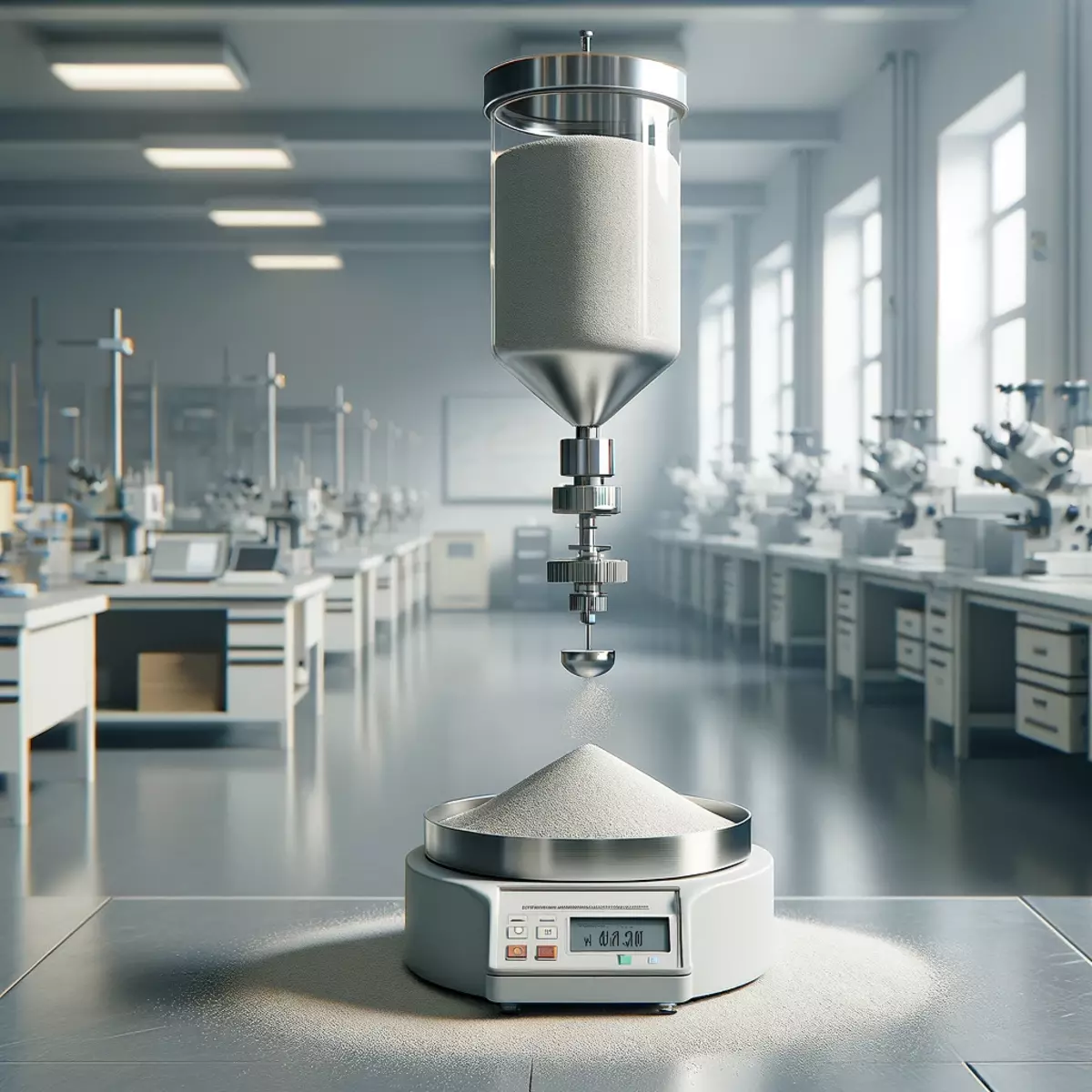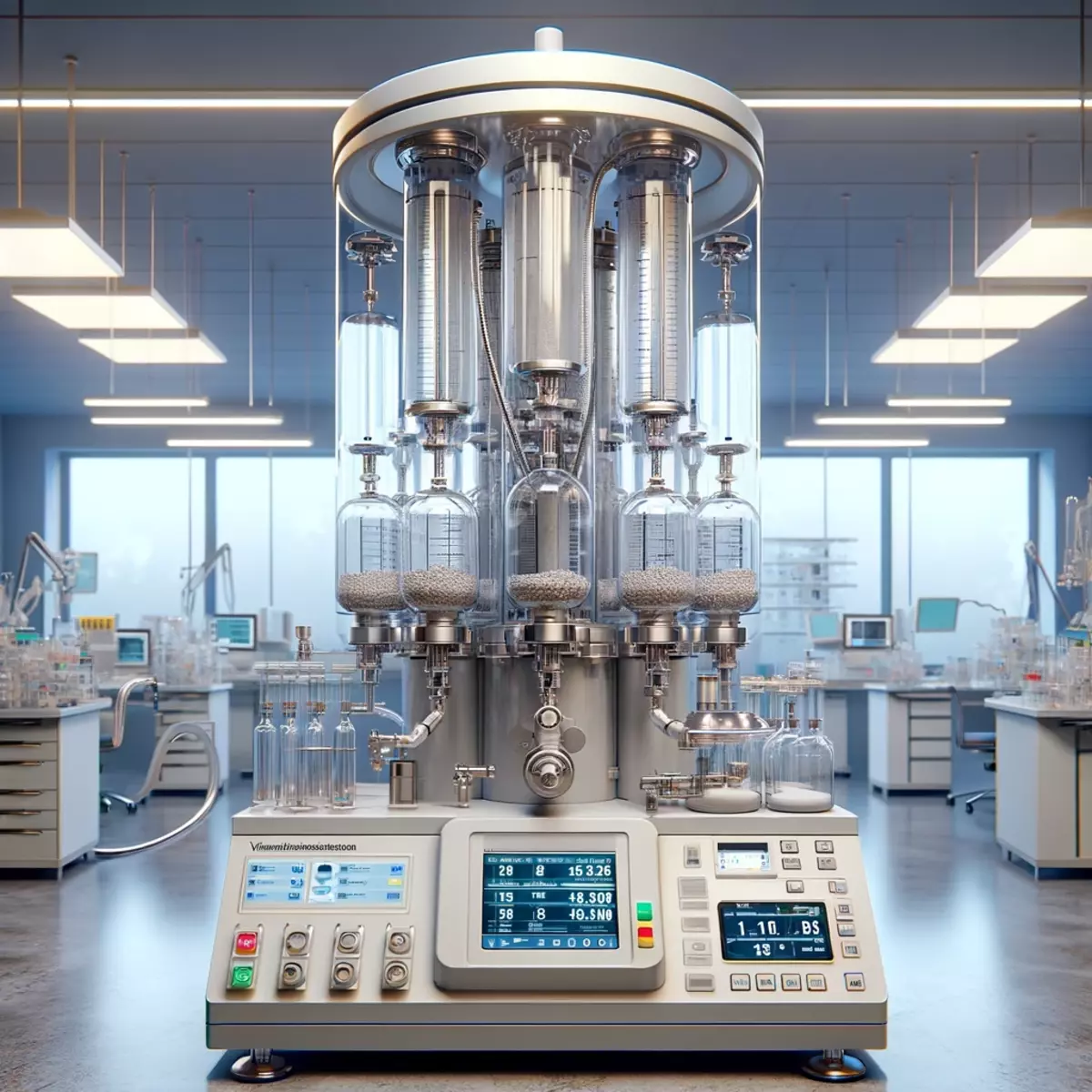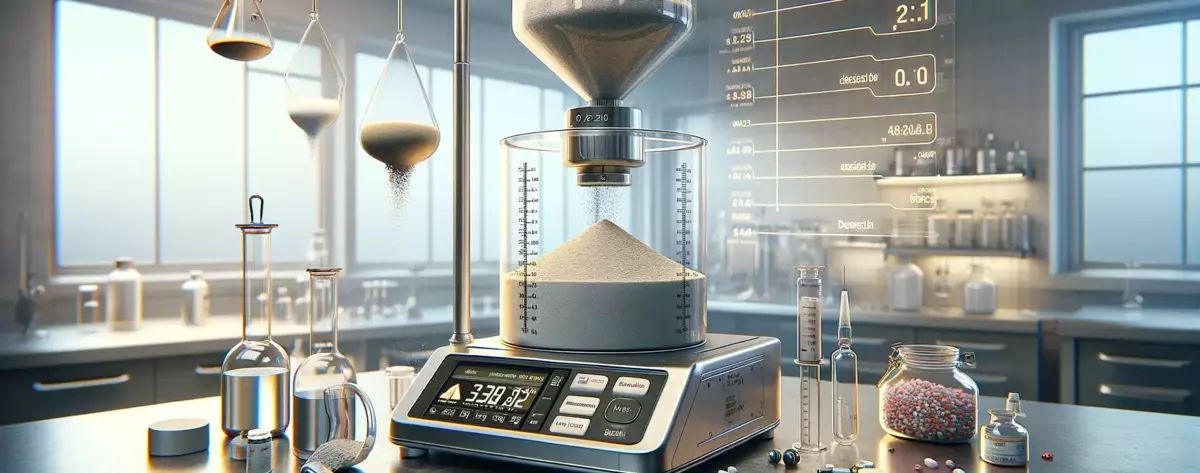Gravimetric Feeding vs. Volumetric Feeding
In modern production and manufacturing processes, the accuracy of feeding raw materials and components is of crucial importance. Two main methods, gravimetric and volumetric dosing, dominate the industry, each with their specific advantages and areas of application.
Gravimetric feeding, which is based on the measurement of weight, is known for its high precision. It is ideal for applications where the accuracy of the material feed is critical, as changes in the density or consistency of the material are automatically taken into account. In contrast, volumetric feeding measures the amount of material based on its volume, which can be advantageous in situations where speed and simplicity are priorities. Despite lower accuracy compared to the gravimetric method, volumetric feeding offers efficiency and cost benefits in processes that handle less critical materials or where the variability of material density is negligible.
The choice between gravimetric and volumetric feeding depends heavily on the specific requirements of the production process, the type of material and the level of accuracy required. This comparison highlights the differences between the methods to help manufacturers choose the optimal dosing technique for their specific needs, thus increasing the efficiency, quality and profitability of their processes.
Feeding solutions : Devices, controllers, drive technology, HMIs - all from a single source
Contact
DEMIC Datentechnik GmbH
Ohlenhohnstraße 48
53819 Neunkirchen
Phone: +49 2247 918 90
E-Mail: kontakt(at)demic-datentechnik.de
Gravimetric feeding - an overview
Gravimetric feeding, a method based on the precise measurement of mass, is essential in industrial processes to ensure accuracy and consistency in material feeding.
This technology is particularly appreciated in areas where dosing accuracy directly influences the quality of the end product. Gravimetric dosing systems use scales or load cells to measure the weight of the dosed material in real time and dynamically adjust the dosing process to achieve maximum precision.
Gravimetric feeding is significantly influenced by the specific properties of the material to be fed. Precise mass measurement allows a high degree of flexibility and accuracy, regardless of external influences such as fluctuations in material density. This is particularly important in the chemical, pharmaceutical and food industries, where compliance with strict quality standards and dosing accuracy is crucial. Adaptability to material changes and the integration of feedback loops for continuous process optimization are key aspects that make gravimetric feeding systems a preferred choice in many industrial applications. Manufacturers using this technology benefit from improved product quality, increased efficiency in the production process and a significant reduction in material waste.
Technical implementation of gravimetric feeding
Gravimetric feeding is a key element in the optimization of industrial manufacturing processes. Its implementation includes advanced systems and solutions tailored to a wide range of materials and applications.
From sophisticated scale systems to integrated feedback mechanisms, gravimetric feeding systems provide precise control of material feed to ensure consistency and quality of the end product.

Weighing systems
At the heart of gravimetric feeding are weighing systems that measure the mass of the material with high precision. These systems can range from simple stand-alone scales to fully integrated solutions that communicate with the production process in real time.
Weighing systems ensure accurate dosing through continuous weight measurement and are capable of detecting and correcting even the smallest deviations, making them indispensable for high-precision applications.
Process integration
Modern gravimetric feeding systems are often equipped with feedback loops that enable dynamic adjustment of the feeding process. Through integration into the process control system, these systems can detect changes in the material parameters and automatically make corrections to ensure consistently high dosing accuracy.
This type of process integration leads to a significant improvement in product quality and process efficiency.
Load cells
To measure the mass of the material, gravimetric feeding systems use high-precision load cells and other precision components. These elements are crucial to the accuracy of the system by providing precise and reliable readings.
The selection and calibration of these components are critical to the performance of the dosing system and must be carefully matched to the specific requirements of the application.
Software
The technical implementation of gravimetric feeding is supported by advanced software and control systems. These enable precise monitoring and control of the dosing process, offer user-friendliness and allow integration into existing production lines.
Software solutions can also be used for data acquisition and analysis in order to further optimize processes and increase efficiency.
Volumetric feeding - an overview
Volumetric feeding, a method of determining the amount of material based on its volume, is an essential part of many industrial manufacturing processes. This method is mainly used where speed and simplicity are preferred over the absolute precision of gravimetric methods.
Volumetric feeding systems are widely used in the food, pharmaceutical, plastics and building materials industries, to name but a few. Their efficiency, versatility and relative cost-effectiveness make them an attractive option for many dosing tasks.
Volumetric feeding principles
The basic principle of volumetric feeding is based on measuring a predefined volume of the material to be fed. In contrast to weight-based measurement, which depends on the density of the material, volumetric feeding can perform independently of weight fluctuations, which can be advantageous in certain applications. Typical systems for volumetric feeding include screw feeders, vibratory feeders, piston pumps and slide gate feeders, each optimized for specific material types and feeding requirements.
Process integration and efficiency
Integrating Volumetric feeding systems into existing production lines is usually straightforward, as they can be flexibly configured and easily synchronized with other processing steps. Their simplicity and reliability help to minimize downtime and optimize the overall production flow. In addition, modern control technologies allow precise adjustment of the dosing speed and volume, further improving the effectiveness of volumetric feeding.
Cost efficiency and maintenance
One of the main advantages of Volumetric feeding systems is their cost efficiency, both in terms of purchase and operating costs. Their simple design and low maintenance requirements contribute to a low total cost of ownership. The ability to handle a wide range of materials efficiently, without the need for complex calibration or adjustment processes, makes them an economical solution for many industrial dosing tasks.
Technical implementation of volumetric feeding
Volumetric feeding plays a crucial role in precise and efficient material handling in numerous industrial applications. It is based on the feeding of a predefined volume of material and is particularly suitable for processes where fast throughput times and flexibility are paramount.
This method includes a variety of systems that are specially adapted to the properties of the material to be dosed and the specific requirements of the production environment. From simple hopper systems to complex volumetric pumps, each system offers individual solutions for efficient dosing processes.

Hopper systems
Hopper systems are a basic form of volumetric feeding and offer a simple but effective method of feeding material. By adjusting the outlet opening or using slides, the amount of material released per unit of time can be controlled.
These systems are ideal for granular or coarse-grained materials and enable continuous or batch dosing with good control over the volume.
Rotating cellular wheels
Rotating cell wheels provide precise volumetric feeding for a wide range of materials, including powders, granules and even liquids. By rotating the cell wheel, a defined amount of material is captured and transported to the outlet. The speed of the cell wheel determines the dosing quantity.
This technology is ideal for applications that require an even and controlled supply.
Volumetrische Pumpen
Volumetric pumps are an efficient solution for liquid and pasty materials. They meter materials using the positive displacement principle, whereby the volume is determined directly by the pump capacity.
These pumps offer high precision and can be adapted for a wide range of viscosities, from low-viscosity solutions to viscous pastes.
Screw conveyor
Screw conveyors are also widely used in volumetric feeding, especially for powders and fine-grained materials. The material is transported and dosed through the conveyor tube by the rotation of the screw.
The conveying rate can be adjusted by the rotational speed of the screw, which enables flexible adaptation to different process requirements.
Advantages of gravimetric feeding
Gravimetric feeding offers numerous advantages that make it a preferred choice in many industrial applications. The main strength of this method lies in its high accuracy and reliability. As the dosing is based on the mass of the material, the results are independent of its density, moisture or other external conditions.
Another key benefit is the ability to provide real-time feedback control and adjustment. Modern gravimetric feeding systems can detect and automatically correct fluctuations in the material flow, ensuring consistently accurate feeding and minimizing material waste. The flexibility of gravimetric feeding also allows for easy integration into automated systems. By using advanced control systems, operators can fine-tune the dosing parameters to adapt to different materials and production conditions.
In addition, gravimetric feeding supports compliance with quality standards and regulatory requirements.
Advantages of volumetric feeding
Volumetric feeding is known for its efficiency and simplicity. This process offers a fast and cost-effective solution for material dosing, especially when high throughput rates are required. The simplicity of the system also makes it easy for operators to use and low maintenance, resulting in lower operating costs.
Another advantage is their flexibility. Volumetric feeding systems can be quickly adapted to different material properties. The ability to easily switch between materials or batches without the need for extensive changeovers maximizes productivity and minimizes downtime. In addition, volumetric feeding enables continuous material supply. This supports a consistent production flow and improves the overall efficiency of the system. The systems have significantly lower acquisition costs than gravimetric systems.
In addition, volumetric systems are often easier to install and configure, which enables rapid commissioning and integration into existing production lines.
Gravimetric feeding
Gravimetric feeding stands for maximum precision. This method is particularly valuable in processes where any deviation in the amount of material has a direct impact on the quality of the final product or the validity of research results. Its independence from variable material densities and ability to compensate for environmental influences make it the method of choice for applications that require maximum control and reproducibility.
Volumetric feeding
In contrast to this is volumetric feeding. This method scores points for its efficiency, especially when processing large quantities of material or when the absolute precision of the dosing plays a subordinate role. Volumetric feeding is often simpler and more cost-effective to implement and maintain. Its flexibility in adapting to different material types and properties offers additional advantages in dynamic production environments.
Your requirements decide
The decisive factor in the selection lies in the specific requirements of the respective area of application. While gravimetric feeding is indispensable in quality-sensitive processes due to its precision, volumetric feeding enables fast and efficient material handling in less critical applications. The optimal choice therefore depends on a careful consideration of priorities in terms of accuracy, efficiency, cost and process integration. In some cases, a combination of both methods can also be useful in order to make optimum use of the advantages of both dosing principles.
Your contact
Björn Demmer
Shareholder - General manager
PHONE: +49 2247 918 90
E-MAIL: bdemmer(at)demic-datentechnik.de
Heinz Demmer
Shareholder - General manager
PHONE: +49 2247 918 90
E-MAIL: hdemmer(at)demic-datentechnik.de



